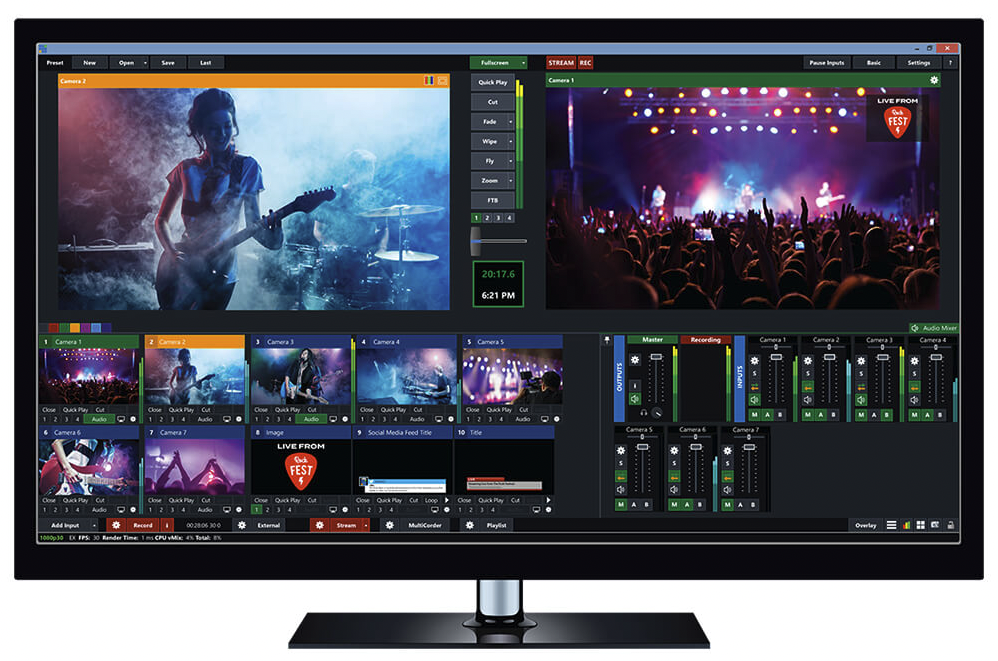With the increasing popularity of fitness tracking apps and devices, many people rely on their smartphones to monitor their daily physical activity.
One of the most commonly used features is the step counter, which tracks the number of steps taken throughout the day.
For iPhone users, the built-in Health app provides this functionality.
However, the accuracy of the iPhone step counter has been a topic of debate among users and researchers.
How Accurate Is iPhone Step Counter?
The iPhone step counter, which utilizes the device’s built-in accelerometer and GPS, is generally considered to be quite accurate.
However, its precision can be affected by various factors such as the way you carry your phone and the stride length setting.
Below we look deeper into the accuracy of the iPhone step counter, examining its limitations, potential sources of error, and comparing it to other dedicated fitness trackers.
Table of Contents
The Technology Behind iPhone Step Counter
The iPhone step counter utilizes the device’s built-in accelerometer to measure movement.
The accelerometer detects changes in acceleration, allowing it to determine when a step is taken.
When you walk or run, the iPhone’s accelerometer detects the vibrations caused by your movement and translates them into step counts.
Apple’s Health app uses a combination of the accelerometer and other motion sensors, such as the gyroscope, to improve accuracy.
The gyroscope helps in detecting the orientation and rotation of the device, providing additional data to refine step counting algorithms.
Factors Affecting Accuracy
While the iPhone step counter can provide a general estimate of your daily steps, several factors can affect its accuracy:
- Pocket Placement: Carrying your iPhone in different pockets or bags can impact the accuracy of step counting.
For example, if you place your iPhone in a loose bag, it may not accurately detect your steps. - Movement Type: The iPhone step counter is primarily designed for walking and running activities.
It may not accurately track steps during other activities such as cycling or weightlifting. - Phone Positioning: The position of your iPhone can affect step counting accuracy.
For instance, if you hold your phone in your hand while walking, it may not detect steps as effectively as when it is placed in a pocket. - Environmental Factors: Certain environmental factors, such as vibrations from vehicles or uneven terrain, can introduce errors in step counting.
Comparing iPhone Step Counter to Dedicated Fitness Trackers
While the iPhone step counter can be a convenient option for tracking daily steps, dedicated fitness trackers are specifically designed for accurate activity monitoring.
Let’s compare the iPhone step counter to dedicated fitness trackers in terms of accuracy:
- Pedometers: Basic pedometers are simple step counters that are often less accurate than the iPhone step counter.
They rely solely on motion detection and lack the advanced sensors and algorithms found in smartphones and dedicated fitness trackers. - Wrist-worn Fitness Trackers: Wrist-worn fitness trackers, such as Fitbit and Garmin devices, use a combination of sensors, including accelerometers and heart rate monitors, to provide more accurate step counting.
These devices are designed to be worn on the wrist, which can improve accuracy compared to carrying a phone in a pocket. - Smartwatches: Smartwatches, like the Apple Watch, offer advanced activity tracking features.
They incorporate multiple sensors, including accelerometers, gyroscopes, and heart rate monitors, to provide highly accurate step counting and activity tracking.
Overall, dedicated fitness trackers tend to provide more accurate step counting compared to the iPhone step counter due to their specialized hardware and software optimizations.
Case Studies and Research Findings
Several studies have been conducted to evaluate the accuracy of the iPhone step counter. Let’s explore some notable case studies and research findings:
Study 1: “Accuracy of iPhone Pedometer Applications”
In a study published in the Journal of Sports Sciences, researchers evaluated the accuracy of various iPhone pedometer applications, including the built-in Health app.
The study involved 30 participants who walked on a treadmill while their steps were simultaneously counted by the iPhone and a research-grade pedometer.
The results showed that the iPhone step counter had an average error rate of 7.2%, indicating reasonably accurate step counting capabilities.
Study 2: “Accuracy of iPhone Step Counting in Free-living Conditions”
Another study published in the International Journal of Behavioral Nutrition and Physical Activity examined the accuracy of the iPhone step counter in real-world conditions.
The study involved 40 participants who wore an iPhone and a research-grade accelerometer for seven consecutive days.
The results showed that the iPhone step counter had a mean absolute percentage error of 9.4%, indicating a relatively high level of accuracy for daily step counting.
These studies suggest that the iPhone step counter can provide reasonably accurate step counts for most users in everyday situations.
However, it is important to note that individual results may vary depending on factors such as walking style, phone placement, and user behavior.
FAQs: How Accurate Is iPhone Step Counter?
1. How does the iPhone step counter work?
The iPhone step counter uses the device’s built-in accelerometer and other motion sensors to detect movement and translate it into step counts.
2. Can I rely on the iPhone step counter for accurate step counting?
The iPhone step counter can provide a general estimate of your daily steps, but it may not be as accurate as dedicated fitness trackers.
3. Does the position of my iPhone affect step counting accuracy?
Yes, the position of your iPhone can impact step counting accuracy.
Placing it in a loose bag or holding it in your hand while walking may result in less accurate step counts.
4. Can the iPhone step counter track activities other than walking and running?
The iPhone step counter is primarily designed for walking and running activities.
It may not accurately track steps during other activities such as cycling or weightlifting.
5. How does the accuracy of the iPhone step counter compare to dedicated fitness trackers?
Dedicated fitness trackers, such as wrist-worn devices and smartwatches, tend to provide more accurate step counting compared to the iPhone step counter due to their specialized hardware and software optimizations.
6. Are there any case studies or research findings on the accuracy of the iPhone step counter?
Yes, several studies have been conducted to evaluate the accuracy of the iPhone step counter.
These studies generally indicate reasonably accurate step counting capabilities for everyday use.
7. Can environmental factors affect the accuracy of the iPhone step counter?
Yes, certain environmental factors, such as vibrations from vehicles or uneven terrain, can introduce errors in step counting.
8. How can I improve the accuracy of the iPhone step counter?
To improve accuracy, ensure that your iPhone is securely placed in a pocket or use a dedicated fitness tracker specifically designed for accurate step counting.
9. Can I use third-party apps for more accurate step counting on my iPhone?
Yes, there are several third-party apps available that claim to provide more accurate step counting than the built-in Health app.
However, it is recommended to research and read reviews before choosing a third-party app.
10. Does the iPhone step counter count steps while driving or riding a bike?
The iPhone step counter is designed to filter out steps that occur during activities like driving or riding a bike.
However, it may not be 100% accurate in distinguishing these activities from walking or running.
11. Can I manually adjust step counts on the iPhone?
Yes, you can manually adjust step counts in the Health app by editing the recorded data.
However, it is important to use this feature responsibly and only make adjustments when necessary.
12. Can I use the iPhone step counter without an internet connection?
Yes, the iPhone step counter works offline and does not require an internet connection for step counting.
13. Does the iPhone step counter count steps while on an airplane?
The iPhone step counter may count steps while on an airplane due to the vibrations caused by the aircraft’s movement.
However, it is recommended to manually adjust step counts in such situations.
14. Can I use the iPhone step counter for tracking my daily activity goals?
Yes, the iPhone step counter can be used to set and track daily activity goals.
It provides a convenient way to monitor your progress and motivate yourself to achieve your targets.
15. Are there any privacy concerns related to using the iPhone step counter?
The iPhone step counter uses data from the device‘s sensors, but it does not share this information with third parties unless explicitly authorized by the user.
However, it is always recommended to review and understand the privacy settings of any app or device you use.
Summary
The iPhone step counter utilizes the device’s built-in accelerometer and other motion sensors to track steps.
While it can provide a general estimate of daily steps, its accuracy may be affected by factors such as pocket placement, movement type, phone positioning, and environmental factors.
Dedicated fitness trackers, such as wrist-worn devices and smartwatches, generally offer more accurate step counting due to their specialized hardware and software optimizations.
However, several studies have shown that the iPhone step counter can provide reasonably accurate step counts for everyday use.
It is important to consider individual variations and user behavior when relying on the iPhone step counter for activity tracking.


